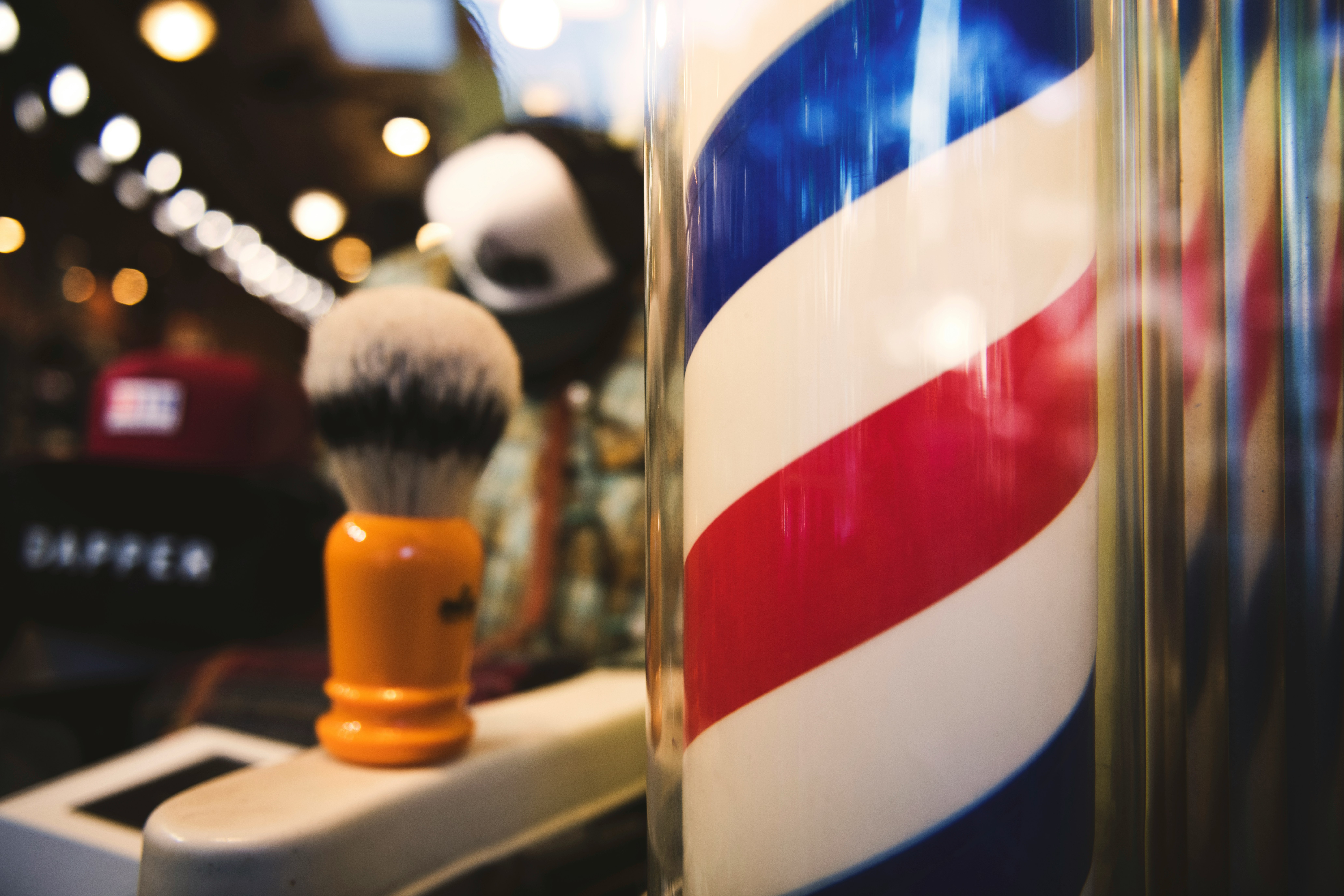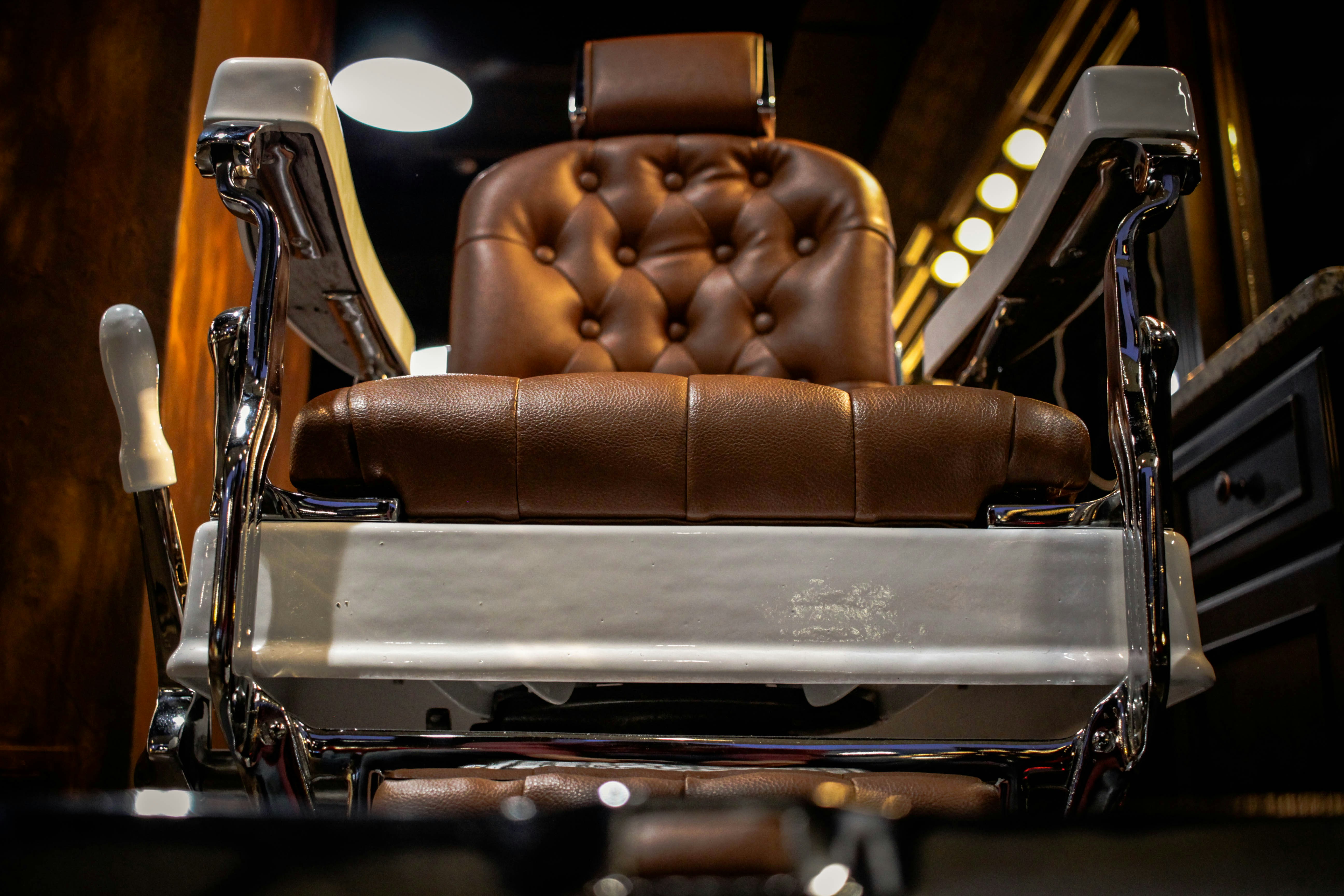Top 3 Mistakes You're Making with DIY Haircuts
/f/101802/6000x3376/00f19a5209/barber2.jpg)
The Top 3 Mistakes People Make with DIY Haircuts (and How to Get Better with Practice)
Cutting your own hair? Here's how to build confidence and skip the rookie mistakes.
In a world where time, money, and convenience matter more than ever, it’s no surprise that more people—especially men—are trying their hand at DIY haircuts. Whether you’re mastering a simple buzz cut, experimenting with a fade, or just cleaning up around the ears, giving yourself a haircut can feel empowering. But let’s be honest: it can also feel terrifying.
The first time you pick up clippers, your heart races. Your mirror becomes both your assistant and your critic. And the tiniest mistake? It feels enormous.
But here’s the good news: you’re not alone, and everyone makes mistakes when starting out. The key is to recognize the common pitfalls, avoid repeating them, and improve with practice.
AI was used to generate this article. Sick of AI bots and AI search result responses and content? Want recommendations or help from an actual human barber directly? Our experienced barbers are available to give advice, answer questions, give product recommendations, etc. and talk through your issues. Download The Guided App at https://theguidedapp.com/ and have a video call with a barber now!
Let’s walk through the top three mistakes people make when cutting their own hair, why they happen, and how to avoid them so you can cut with confidence—even if you’re just getting started.
Mistake #1: Starting Without a Plan
The problem: You turn on the clippers and just start cutting, hoping it will all come together. Spoiler: it rarely does.
Why it happens:
DIY haircutting can feel deceptively simple. Most buzz cuts or fades look straightforward from the outside. But once you start, you realize there’s more structure to a good cut than you thought—guard lengths, blending zones, angles, and even hair growth direction matter.
What goes wrong:
Uneven sides
Harsh lines between clipper guard transitions
Accidental “bald patches” or missed spots at the back
Hairline or neckline that’s crooked or too high
The fix:
Have a game plan before you touch your hair.
Here’s how:
Choose your style: Buzz cut? High fade? Taper? Look up photo references so you have a target.
Map your lengths: Decide which clipper guard (#2, #3, #4, etc.) to use for each part of your head.
Work from long to short: Always start with a longer guard—you can always go shorter, but you can’t put hair back.
Know your zones: Divide your head into the top, sides, back, and neckline to work systematically.
Pro Tip: Practice your motion and grip before cutting anything. Run the clippers with the guard on and get used to the movement on your dry hair.

A hard line between short and long areas
Over-blending that removes too much hair
A lopsided fade because one side was rushed or overcut
The fix:
Take your time with the fade and use the lever on your clippers.
Here’s how to improve your blending game:
Use a fade lever: Many clippers have an adjustable taper lever. Practice opening and closing it to create half-step lengths (e.g., between #1 and #2).
Feather the line: Don’t press hard—use light, flicking motions as you move up and out from the fade line.
Use a mirror (or two): A second mirror to view the back of your head can prevent mistakes.
Work gradually: Blend in layers. Don’t expect to do a perfect fade in one pass.
Pro Tip: If you’re not confident fading yet, start with a “two-guard cut” (e.g., #2 on the sides, #4 on top). It’s clean, classic, and forgiving.

Mistake #3: Neglecting the Neckline and Edges
The problem: The main cut looks good, but the details—neckline, sideburns, and hairline—are messy, uneven, or unfinished.
Why it happens:
When you focus on the top and sides, it’s easy to forget the finishing touches. But those details make a big difference in how “professional” the cut looks.
What goes wrong:
Crooked neckline
Jagged or uneven sideburns
Missed hair on the neck or behind the ears
Using clippers instead of a trimmer for detail work
The fix:
Take time for the cleanup phase. Use a trimmer or the bare clippers (no guard) for detailing. Here’s what to focus on:
Clean neckline: Decide whether you want it rounded, straight, or tapered. Use a mirror, or ask a friend for help if it’s your first time.
Symmetrical sideburns: Check that both sides are even and fade naturally into your beard or skin.
Edges around ears: Carefully clean around the ears without cutting too high.
Shave the neck: Use a razor or foil shaver for that clean finish—especially if your hair grows fast.
Pro Tip: Use a dry erase marker to lightly mark your desired neckline in the mirror before trimming. It sounds silly, but it works.
Getting Better with Every Cut: Confidence Comes with Practice
The truth is, your first DIY haircut might not be perfect. That’s OK.
Everyone starts somewhere, and with each attempt, you’ll learn what works best for your hair type, your tools, and your style preferences.
Here’s how to keep improving:
Have a video call with a barber - A barber on The Guided App can talk you through an issue or question in the middle of a haircut or when you are preparing.
Keep a haircut journal – Note which guards you used, where you struggled, and what to adjust next time.
Watch tutorial videos – YouTube has excellent step-by-step videos for beginners (look for buzz cuts, fades, and clipper-over-comb techniques).
Cut when you have time – Don’t rush it on a tight schedule. Give yourself an hour for the first few cuts.
Practice consistency – Cut on a regular schedule (every 2–3 weeks) to stay sharp and reduce anxiety.
Most importantly: you’ll get better. What feels intimidating today will feel second nature in a few months.
Final Thoughts: You Don’t Need to Be a Pro to Look Good
DIY haircuts aren't just about saving money or skipping the barbershop—though those are nice perks. They’re about taking control, learning a new skill, and building confidence in how you present yourself.
Yes, you’ll make a few mistakes. But with each cut, you’ll gain sharper hands, sharper eyes, and a sharper sense of style.
So take your time, plan your cut, and know that perfection isn’t the goal—progress is.
You've got this.
Bonus: What's that red, white, and blue spinning thing outside barber shops?
The red, white, and blue spinning cylinder seen outside barbershops is called a barber pole.
A barber pole is a traditional sign used to identify barber shops. The spiraling red, white, and sometimes blue stripes are iconic and instantly recognizable—even if many people don’t know what they represent.
The barber pole dates back to the Middle Ages, when barbers were more than just hair cutters—they also performed minor surgical procedures, especially bloodletting, a common medical practice at the time.
The Symbolism:
Red = blood
White = bandages
Blue (added later, especially in the U.S.) = often thought to represent veins, or as a nod to the American flag
The pole itself = the wooden staff patients would grip during bloodletting to make veins more visible
Barbers would display blood-soaked bandages on a pole outside their shops, and over time, this gruesome visual evolved into the familiar swirling stripes.
In 1745, barbers were officially separated from surgeons in England. Barbers focused on grooming, and surgeons on medicine.
The barber pole remained as a symbolic holdover from their medical past.
The rotating cylinder design was added in the 19th–20th century with electric motors, giving it the swirling illusion we see today.
Now the barber pole is purely decorative, but still serves as a universal sign of barbershop tradition, craftsmanship, and community. In many countries, it’s even protected as a registered symbol for licensed barbers.
So now you know!
Need help picking clippers or other tools? Still have questions about cutting hair? Our experienced barbers are available to give advice and talk through your questions or issues. Download The Guided App at https://theguidedapp.com/ and have a video call with a barber now!
This article is generated by AI. For comments, questions, or other inquiries, please reach at [email protected].
/f/101802/4649x3099/9fa7f459da/speech-therapy.jpg)
/f/101802/4819x3213/c590b5823a/graphic-design.jpg)
/f/101802/3666x4582/09d3857211/audio-visual.jpg)
/f/101802/7680x5120/c316d09735/skin-care1.jpg)